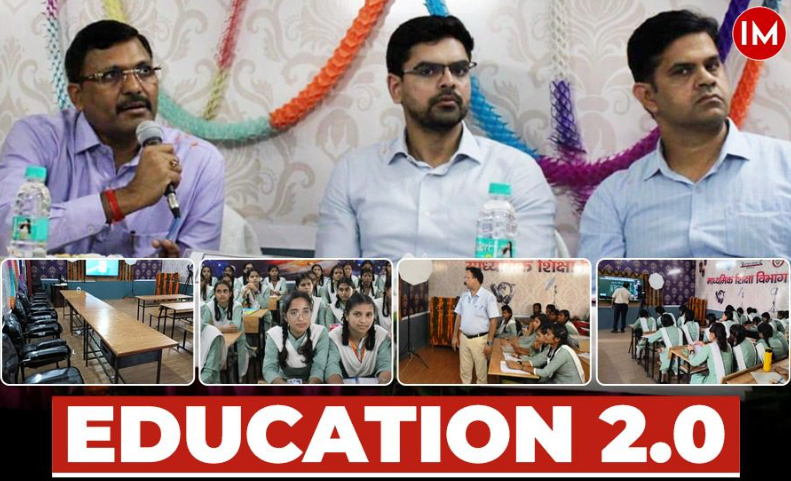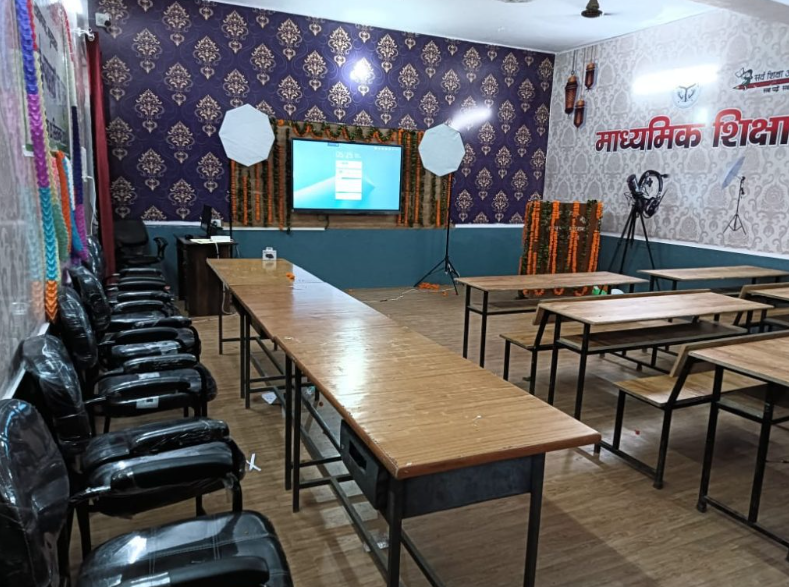“This initiative is not a stop-gap solution. It’s a value addition that will continue to benefit students even after the teacher shortage is addressed. We envision a future where students can learn from the best educators, regardless of geographical limitations,” says Aunjaneya Kumar Singh.

The shortage of qualified teachers has long been a pressing issue in India’s education system, particularly in government schools across rural and semi-urban areas. Many schools, especially in less affluent districts, struggle to find and retain experienced educators, leaving students with limited learning opportunities. This gap has led to a growing concern among policymakers, educators, and parents alike. While recruitment processes are in place, they are often slow and tangled in bureaucratic red tape, leaving many classrooms without teachers for months, even years.
In Moradabad, Uttar Pradesh, this situation has been particularly dire. To address this crisis, a group of dynamic IAS officers—Aunjaneya Kumar Singh, Sumit Yadav, and Anuj Singh—have launched a groundbreaking initiative called Mission E-Pathshala. This project, designed to bridge the gap between the teacher shortage and the quality of education in government schools, leverages technology to connect students with experienced educators in real-time, offering a unique blend of traditional and modern education techniques.

Mission E-Pathshala
Understanding the urgency of the problem, IAS officers Aunjaneya Kumar Singh, Sumit Yadav, and Anuj Singh took the initiative to find an innovative solution. The idea behind E-Pathshala is simple yet effective: use technology to connect multiple schools with qualified teachers through live online sessions. By doing so, they ensure that students, even in the most remote areas, have access to quality teaching without being solely dependent on local recruitment.

“The E-Pathshala initiative started in Rampur but quickly expanded to Moradabad,” IAS Aunjaneya Kumar Singh, Divisional Commissioner, Moradabad shared with Indian Masterminds. The project has already reached 38 government schools, particularly Government Inter Colleges (GICs), with a focus on classes 9th to 12th. In these schools, where teacher shortages are most critical, the program is helping students in subjects like mathematics, science, and social studies.
How E-Pathshala Works
The initiative hinges on creating interactive classrooms equipped with smart boards, microphones, and cameras. Teachers physically present in one location conduct lessons that are broadcast live to multiple schools simultaneously. This allows students across different locations to participate in real-time, ask questions, and engage with the material. The live sessions are supplemented with recorded lectures that can be revisited later for revision.

“The core of E-Pathshala is interaction. It’s not just about broadcasting a lecture; it’s about creating a classroom environment where the students and teachers can engage with each other,” says Mr. Singh. The classes follow a structured schedule, with 30 minutes devoted to the lecture and the remaining 30 minutes for interaction and question-answer sessions. This format allows students to clarify their doubts in real time, making the learning process more dynamic and effective.
The primary goal is to preserve a structured, disciplined classroom environment, even in virtual settings. IAS Aunjaneya Kumar Singh emphasized that this isn’t about increasing reliance on mobile phones or YouTube. The focus should be on maintaining classroom discipline and keeping students engaged with their books and learning materials, much like in a physical classroom.
“To mitigate the challenges of power failure and Wi-Fi outages, several backup solutions are being considered,” IAS Sumit Yadav, CDO Moradabad told Indian Masterminds. As discussed, the implementation of power backups such as solar energy systems or inverters with a 5-kilowatt capacity can help ensure uninterrupted classes even during power outages or network disruptions.

Building a Sustainable Model
The long-term goal of the E-Pathshala initiative is not just to fill the current gap in teacher availability but also to create a sustainable model that continues to add value even after the recruitment processes are completed. As new teachers join the schools, the online sessions can evolve into specialized classes conducted by expert guest teachers from across the country. This way, students will still have access to top-notch education, even if they are in remote areas.
“This initiative is not a stop-gap solution. It’s a value addition that will continue to benefit students even after the teacher shortage is addressed. We envision a future where students can learn from the best educators, regardless of geographical limitations,” Aunjaneya Kumar Singh adds.
Expanding Horizons
While the initiative is currently focused on Moradabad, the team has plans to expand it to other districts in Uttar Pradesh, offering students a wider perspective and access to resources beyond their immediate vicinity.

“The program’s success lies not just in its technological innovation but also in the way it keeps students at the center of the initiative. Rather than simply filling the gap left by teacher shortages, E-Pathshala aims to enhance the overall learning experience by making education more interactive and accessible,” Says Mr. Yadav.
This project is not only addressing the immediate teacher shortage but also setting the stage for a future where quality education is available to every student, irrespective of their location. By creating a model that integrates technology with traditional teaching methods, the team behind E-Pathshala is ensuring that students in Moradabad are not left behind in their educational journey.
Article Credit: indianmasterminds